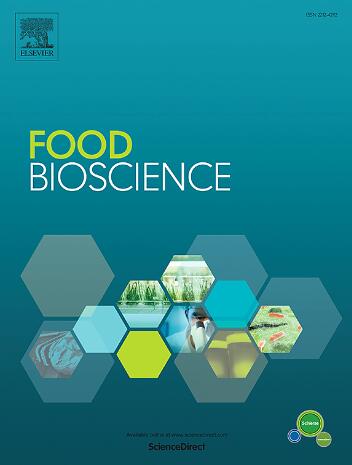Curcumin-loaded antioxidant oleogels based on native and modified bean starches
IF 4.8
1区 农林科学
Q1 FOOD SCIENCE & TECHNOLOGY
引用次数: 0
Abstract
Oleogels show promise in the food industry as potential substitutes for saturated fats, providing a medium for incorporating bioactive compounds. Starch modified with octenyl succinic anhydride (OSA) can serve as a structuring agent for vegetable oils due to its amphiphilic nature. This study aimed to develop oleogels based on native starch (NS) or modified starch (MS) bean, sunflower oil, beeswax, and curcumin. The oleogels were evaluated for gel hardness, oil holding capacity, structural stability, weight loss, X-ray diffraction, peroxide value, and antioxidant activity during 30 days of storage. The modification reduced the amylose content by 36%, viscosity by 32%, breakdown by 78%, and retrogradation by 54% of the starch. The oleogels exhibited structural stability and oil binding capacity above 96% during 30 days. Oleogels with NS and 0.5% curcumin were 20% softer than those without curcumin. Over 30 days, the hardness of the oleogels increased by 21%–48%. The addition of 0.5% curcumin in native and OSA starch oleogels increased their antioxidant activities to 41% and 35%, respectively. The texture and antioxidant properties of the oleogels indicate the feasibility of their application in food products.基于原生豆淀粉和改性豆淀粉的姜黄素负载型抗氧化油凝胶
油凝胶有望成为食品工业中饱和脂肪的潜在替代品,并为生物活性化合物的加入提供媒介。用辛烯基丁二酸酐(OSA)改性的淀粉具有两亲性,可用作植物油的结构剂。本研究旨在开发基于原生淀粉(NS)或变性淀粉(MS)豆、葵花籽油、蜂蜡和姜黄素的油凝胶。对油凝胶的凝胶硬度、持油能力、结构稳定性、失重、X 射线衍射、过氧化值以及在 30 天储存期间的抗氧化活性进行了评估。改性后的淀粉含量降低了 36%,粘度降低了 32%,淀粉分解率降低了 78%,逆变率降低了 54%。油凝胶在 30 天内表现出结构稳定性和高于 96% 的油结合能力。含有NS和0.5%姜黄素的油凝胶比不含有姜黄素的油凝胶软20%。在 30 天内,油凝胶的硬度增加了 21%-48%。在原生淀粉油凝胶和 OSA 淀粉油凝胶中添加 0.5% 的姜黄素后,其抗氧化活性分别提高了 41% 和 35%。油凝胶的质地和抗氧化特性表明了其在食品中应用的可行性。
本文章由计算机程序翻译,如有差异,请以英文原文为准。
求助全文
约1分钟内获得全文
求助全文
来源期刊

Food Bioscience
Biochemistry, Genetics and Molecular Biology-Biochemistry
CiteScore
6.40
自引率
5.80%
发文量
671
审稿时长
27 days
期刊介绍:
Food Bioscience is a peer-reviewed journal that aims to provide a forum for recent developments in the field of bio-related food research. The journal focuses on both fundamental and applied research worldwide, with special attention to ethnic and cultural aspects of food bioresearch.
 求助内容:
求助内容: 应助结果提醒方式:
应助结果提醒方式:


